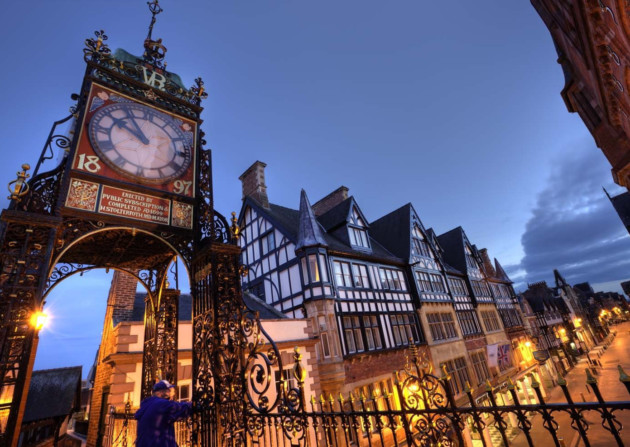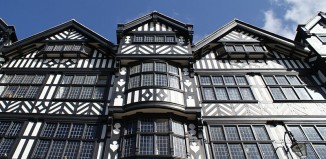Chester’s historic city highlights
Explore the sites of this Cheshire city and discover why Welshmen might have cause to feel nervous within its historic city walls after sundown!
According to unchanged medieval law, any Welshman caught within the city walls of Chester after sundown is fair game to bow-and-arrow wielding Englishmen. Times have of course brought peace to this pretty and friendly riverside city, which creaks beneath the weight of its heritage, and people. Of the current 120,000 population, only 1,500 residents live within the compact city’s Roman walls, making the centre a rare address. Early settlers were quick to realise the benefits of the tidal River Dee, shipping in wine, olives and other desirable commodities from warmer regions of their vast empire. The river would establish Chester’s position as a centre of commerce and administration, which the Romans were quick to protect, building sandstone walls as a deterrent against the marauding Welsh, whose lands lay just three miles distant. The Normans added to previous handiwork, building a complete two-mile circuit around the city, refortified in the Middle Ages as the threat of civil war loomed. “We know that the Roman soldiers went into the Welsh hills to plunder gold, silver, copper and lead for export. Their original small harbour expanded over the centuries transforming Chester’s fortunes and scale into a great seafaring port by the Middle Ages,” explains tour guide Liz Roberts. Little evidence remains to be seen today, save for aged maps illustrating the monopoly of the harbour, which extended across Chester Racecourse. When the Dee eventually silted up, narrowing the river and changing its course, restricted access sealed the fate of the port.
Roman ruins are to be seen at Britain’s largest amphitheatre, which is partially excavated on Little St John Street. A stroll along the city walls enables a clear, elevated view of this relatively recent discovery, which was built for entertainment and military training. “Archaeologists are still discovering items here to corroborate the city’s early history,” says Liz. “During the Civil War, Chester remained loyal to the king, never surrendering to the Parliamentarians, to great cost. The townspeople starved during the winter of 1645, which explains findings of cooked dog and cat bones dating to the period.
“So much of the old city remains because Chester avoided the Blitz,” adds Liz. “Our industries were light: snuff mills, tanning and leather, but nothing that would be seen as a threat to the enemy.” Tudor buildings are an iconic attraction – the oldest lean drunkenly on their neighbour, the more stable host the unusual retail experience found in The Rows, an elevated covered walkway along which shoppers can browse a host of boutiques, cafes and bars – not to mention its more hidden wonders: a priest hole, Roman mosaics and hypocaust, ancient remnants of wattle and daub. A popular city landmark is the ornate Eastgate clock, a much photographed timepiece installed in 1899 to celebrate Queen Victoria’s Diamond Jubilee of 1897. Another highlight is the medieval cathedral, which opened its tower doors to the public for the first time in April 2014. Those without vertigo can experience the ‘Cathedral at Height’ tour, involving a climb of 216 steps, pausing to explore a dedicated tower exhibition, before the final push to reach the roof. Here, 125ft up, it is possible to see five counties on a clear day, or at least the wonderful canopy of the city rooftops.







